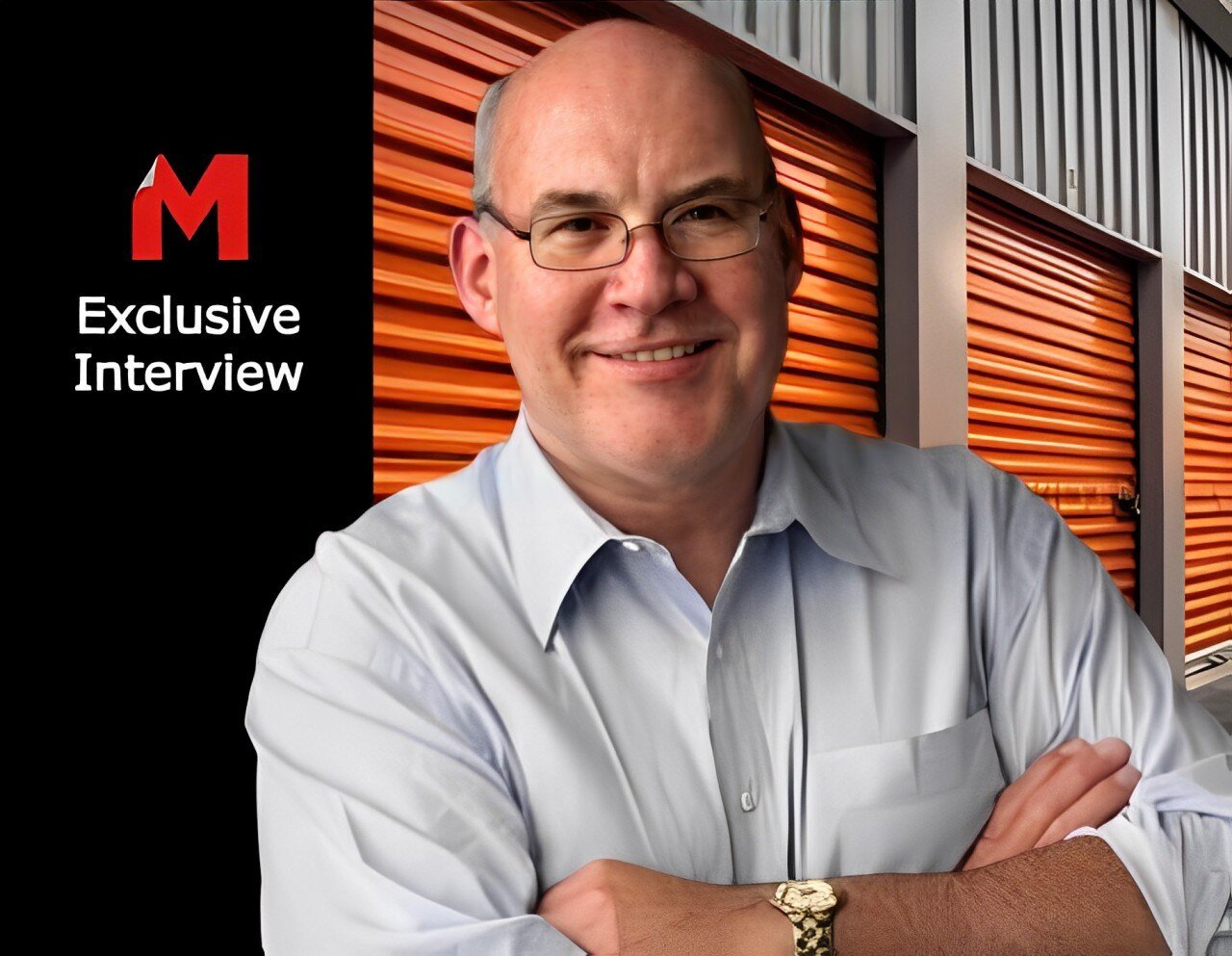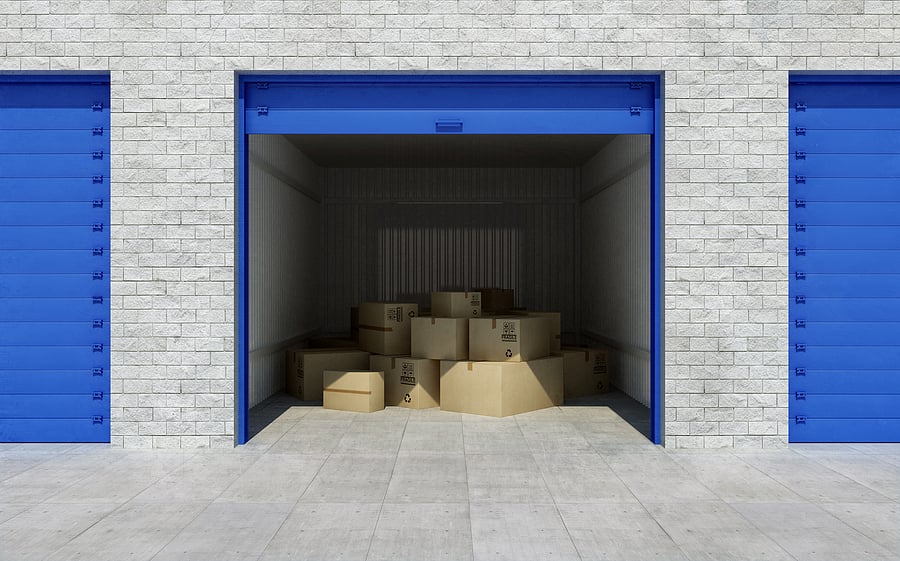Silver Tsunami
The Impact Of Aging Baby Boomers On The Self-Storage Industry
The baby boom generation (born between 1946 and 1964) is largely credited with the genesis of the modern self-storage industry. Baby boomers’ propensity for consumption of flavor-of-the-month goods created a need to store possessions that fell out of favor or grew too large for their available space.
“We’ve shopped ourselves to death,” admits Anne Ballard, president of marketing, training, and developmental services for Universal Storage Group and a card-carrying baby boomer.
Additionally, boomers led the sexual revolution and, perhaps not coincidentally, the rise in the divorce rate. Mobility has been the hallmark of boomers as they frequently changed residences to pursue better paying jobs or to move up to larger houses that would grow to the sky in valuation.
All these experiences fed the storage industry as boomers became an outsized presence in the market, requiring a temporary place to store their items while they moved onto their next adventure.
But now the youngest boomers are AARP members, while the oldest are well into retirement. As aging boomers acquire fewer goods and alter their lifestyles, the question for self-storage is: Will this generation of super consumers continue to feed demand for the industry’s products going forward?
Silver Tsunami
It’s estimated that 10,000 boomers turn 65 years old every day and are projected to do so until 2030, when all baby boomers will have reached retirement age. This phenomenon, sometimes referred to as a “Silver Tsunami,” will expand the size of the older population so that by 2030, one in every five residents will be 65 or older, up from one in seven in 2014, according to the U.S. Census Bureau.
This shift toward an increasingly older population is expected to endure, according to the Census Bureau.
Census statistics show that in 1964, the last year of the baby boom, that generation’s population had reached 72 million. The size of the baby boom population continued to increase between 1965 and 1999, peaking at 78.8 million due to immigration of boomer age individuals into the United States.
The baby boom population has been decreasing since 1999; by 2030, when the baby boomers will be between 66 and 84 years old, that number is projected to drop to 60 million as mortality takes its toll.
The baby boom cohort will experience a substantial decline in the coming decades, and that pace is expected to accelerate as the baby boomers become elderly, according to census projections.
U.S. Census Bureau Projections of the Population in the Baby Boom Ages

Assessing Storage Demand
According to the Self Storage Association’s “Self Storage Demand Study” conducted in 2017, baby boomer and Generation X (mid-1960s through early 1980s) customers make up the majority of the self-storage customer base (approximately 32 percent each, representing 64 percent of national customers).
Since SSA’s study is national in scope, individual storage companies may report differing mixes. “We have more Gen X than boomers at the moment,” reports Todd Buese, director of revenue management and business intelligence for the William Warren Group, which is based in Santa Monica, Calif., and operates under the StorQuest brand.
Buese reports Generation X tenants make up 37 percent of StorQuest’s tenants, while baby boomers and older comprise 32 percent of the operator’s tenants. Millennials represent 23 percent of customers, compared to SSA’s national rate of 28 percent.
Atlanta-based USG, which reports its tenant mix based on age groups rather than by generation, shows customers between the ages of 46 and 55 (composed primarily of Gen X) made up 27.5 percent of its customer base, while 21.7 percent were age 56 to 65 (composed entirely of boomers) and 14.6 percent were over age 65 (representing a mix of boomers and Greatest Generation).
The data is significant for Ballard because it reveals that storage users are getting progressively older.
“What I am seeing is about 10 years ago, the predominant age group was 36- to 45-year-olds,” Ballard says. “That has changed now; it is the 46- to 55-year-olds who are the predominant storage customers. Over 65 was 14.6 percent and, in years past, over 65 was just a blip.”
According to USG data, customers over age 46 made up 42.3 percent of storage users in 2007. That number increased to 63.8 percent in 2017.
Save Or Toss?
While baby boomers remain a strong customer base for self-storage, future demand from this generation remains in question for some. As boomers age, will they continue to hold onto their memories and possessions or finally dispose of them? How will downsizing affect their need for storage? Mortality is dwindling the ranks of this generation; will boomers’ heirs continue to keep their parents’ possessions?
In recent years, storage experts, as well as real estate brokers and investment analysts, have universally proclaimed that even though boomers are aging and becoming empty nesters, they will keep most of their possessions and put them into storage. As boomers downsize their residences, the experts contend they won’t have room for all their possessions and will continue to put excess goods into storage units.
However, the Wall Street Journal reported last year that future growth in the self-storage sector could be a concern as aging baby boomers moving into smaller housing will be disposing of material items rather than storing them.
There likely will be elements of both arguments going forward, but the overwhelming majority in the industry are banking on boomers being a strong component of customers in the near future.
Investor Management Services of Charlotte, N.C., reported in November that demographic shifts are effectively driving change in commercial real estate and shaping the future of this market.
“While millennials seem to get all of the focus these days, baby boomers are currently one of the most influential generational cohorts in the marketplace,” Investor Management Services says. “An aging population and their impending retirement will have major implications for the commercial real estate industry. This generation is expected to enjoy a longer lifespan than generations prior. As such, the market (and demand) will continue to grow.”
As boomers continue to downsize and move into apartments and condos, the firm notes they will relocate to homes that are approximately half the size of their former living space.
“However, that doesn’t mean that they want to get rid of all their possessions when they move into a new place,” the firm says. “Many people in this generation have furniture, heirlooms, and belongings that they have accumulated over the years and want to pass down to their children and grandchildren, which is where self-storage comes in.”
Ballard echoes these sentiments. “Being a boomer myself, we have a great attachment to things of our ancestors: mamma’s wardrobe or dining table or china,” she asserts. “Millennials and Gen X and Y don’t have those kinds of attachments. For us, acquiring all that stuff is too valuable to throw away. Boomers love their stuff and pay to keep it in self-storage.”
Downsizing is frequently cited as one of the leading reasons for customers to use self-storage.
“Downsizing and movement to retirement communities will continue to create more opportunities to attract baby boomers to our product,” says Michelle Bakva, vice president of marketing for the William Warren Group. “There is often high sentimental value associated with these belongings, and likely not conducive to storing in downsized living space.”
Ballard estimates the industry can count on boomers to be key storage customers for about 20 more years.
Ken Nitzberg, CEO of Emeryville, Calif.-based Devon Self Storage, contends that economics plays a deciding factor in the boomers’ decisions to use storage as they relocate.
“That’s highly dependent upon an individual’s income, because once they retire and have a fixed income, they’re going to look for ways to cut costs,” says Nitzberg, a self-proclaimed boomer. “If you have a 5,000-square-foot house because you raised four kids and now you move into a condo, you can’t keep all that stuff and not all of them store it. Those with ongoing funds and plenty of capital and they want to keep it, they’re going to stay where they are.”
Geography plays another key role. “If you’re in the Bay Area, where housing costs are astronomical, you’re going to have a much smaller living space; and if you have more stuff, you’ve got to put it somewhere or get rid of it. To the extent you want to keep it, storage is your only viable option,” Nitzberg says.
Whereas, in the Midwest and non-coastal areas, where housing is more affordable, a resident can own a much larger house and store items in the basement, attic, or garage.
Size Matters
Where boomers’ lifestyles could significantly impact storage is in the unit sizes they will need in the future.
According to SSA, boomers gravitate to larger units and lead the 10-by-20 category (16.4 percent of boomers rent this size compared to 14.7 percent overall), and rank second in the 10-by-10 and 10-by-15 sizes.
Millennials overwhelmingly lead the 5-by-5 or smaller category, 26.5 percent versus 15.3 percent overall.
“We have found that none of our stores can keep a 10-by-30 unit in stock; they’re always full, especially the very few that are drive-up. They are usually the first units sold,” Ballard says.
“We’re seeing boomers occupying the largest units as well—the average being 10-by-13,” says William Warren’s Bakva. “The category also occupies the largest units of any other generational category, with the largest length of stay, underscoring the value, size, and quantity of items being stored.”
What is promising for storage operators moving forward is revealed in the consuming habits of renters who are older than baby boomers. The Greatest Generation leads the 10-by-10 category (29.5 percent versus 22.4 percent overall) and the 10-by-15 unit size (22.7 percent versus 13.4 percent overall).
What this says for optimistic self-storage professionals is that the older the customer, the larger the size they use. SSA survey results testify to this trend: More than half of all 10-by-10s (52.9 percent) and 41.5 percent of 10-by-15s are occupied by customers over 55.
In the length-of-stay category, more than one in five storage customers (21.3 percent) rent their units for one to two years, and approximately one in four customers (25.2 percent) stay for longer than two years, according to SSA.
Digging deeper into the data, more than one in three tenants (35.9 percent) who rent for one to two years, and approximately two of every three tenants (66.3 percent) who rent for longer than two years, are over age 55.
In StorQuest’s length-of-stay breakdown, boomers lead the way with 19 months’ average, followed by Gen X at 15 months, and millennials at nine months.
“We call self-storage a lifestyle management tool, because the biggest thing boomers like about it is it lets them put off emotional decision-making,” Ballard says. “It lets people put that stuff in storage and not be forced to make a decision about liquidating or distributing while they’re also dealing with the stress of a situation. Let’s just put this stuff in storage and we’ll figure it out later.”
Preparing For Aging Boomers
Although declining in numbers (the boomer population is decreasing by more than one million annually, according to some estimates), baby boomers promise to be a continuing force for the storage industry for nearly two more decades.
Baby boomers control over two-thirds of the disposable income in the U.S. as a result of decades in the workforce, equity, investments, and inheritances. “This wealth enables them to spend money on luxuries that include RVs, cars, and even collectibles such as art, which need to be stored somewhere,” Investor Management Services says in its report.
As boomers grow past retirement age, storage facilities may need to alter some of their services or amenities to cater to this age group. “For example, properties with a high concentration of older renters might want to focus their efforts on more convenience-oriented services such as professional packing and moving assistance,” the Self-Storage Almanac reports.
Additionally, more facilities may need to comply with Americans with Disabilities Act (ADA) standards in the future. As market demographics shift to older clientele, aging facilities with out-of-date doors could pose injury risks to some tenants. The prospect of ADA legal actions could require upgrades to roll-up doors and security systems in the years ahead.
Operators in states with high concentrations of boomers may be in the best position to take advantage of this “Silver Tsunami”.
According to Motley Fool, New England states have some of the highest concentrations of baby boomers. In Maine, 36.8 percent of the population is composed of baby boomers, with New Hampshire coming in a close second. Montana and Vermont also have baby boomer concentrations greater than 35 percent.
Surprisingly, some states noted for their large retirement communities actually have the lowest concentrations of baby boomers. These include California, Texas, Georgia, Arizona, and Utah. California has more baby boomers overall (approximately nine million), but not the highest concentration.
A Nielsen report found several ways boomers plan to live after retirement, including:
- About 66 percent won’t be moving at all.
- Sixty-seven percent of those moving will stay in the same state.
- Half of the boomers who move won’t stray more than 30 miles from their current home.
- Forty-six percent of boomers who are moving want a bigger home.
- Fifty-four percent will downsize.
About six million will be renting by 2020, according to Freddie Mac, and they’re looking for affordability, amenities, less property to maintain, and a walkable community.
Yardi Matrix Self Storage reports among the factors driving the growth of new storage centers in some markets is the need to accommodate a flood of retirees. Yardi Matrix sayssmaller retiree markets, such as Charleston, S.C., are adding storage to accommodate retiring baby boomers, while fast-growing tertiary markets like Augusta, Ga.; Boise, Idaho; and Colorado Springs, Colo., are playing catch-up as retirees migrate to these communities.
As boomers reach the end of their lives, this will trigger another need for storage. Many storage owners have seen more tenants settling the estates relatives who pass on and placing many goods and heirlooms in storage until they can be later distributed or disposed of in an estate sale. Once again, self-storage becomes a “lifestyle management tool,” allowing the heirs months or even years to put off thoughts of parting with their family’s belongings.
Baby boomers promise to be an important component of the tenant mix at most self-storage centers and are not to be ignored in marketing efforts. Boomers possess the most wealth, they comprise a third of tenant mixes at most facilities, they tend to rent larger units, and they stay longer. As Father Time catches up with boomers, this generation eventually will give up its dominance in the storage industry, but nevertheless will be heard from for years to come.
David Lucas is a freelance writer based in Phoenix, Arizona. He is a regular contributor to MiniCo’s various publications.
More Content
Popular Posts
The self storage industry is in a precarious...
Like its name implies, Surprise, Ariz., a...
Joe Shoen, CEO of U-Haul, has had enough.
Joe Shoen has had enough.
In a record-breaking deal finalized May 12,...
Senate Bill 709 (SB709) has many in the...
Donald Trump has just reclaimed the White...
Self-storage operators wear a lot of hats....
The question of “abandonment” of stored...
In 1992, Clinton strategist James Carville...
Recent Posts
When Neville Kennard left for a work trip to...
Self-storage software is no longer...
The self-storage industry continues to...
Fires in California. Tornadoes in Kansas....
From policy pivots in Ottawa to tariff...
Self-storage operators have struggled to...
Their signature red coats may draw attention...
Nailing down Josh and Melissa Huff for an...



















